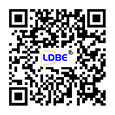What is the laser line width?
Time:2024-10-14
Views:128
Laser line width, the full width at half maximum of the emission spectrum of the laser light source, that is, the half height of the peak (sometimes 1/e), which corresponds to the width between the two frequencies.
The light is emitted from the laser. After the laser oscillates, one or more longitudinal modes are generated, and the frequency range of each longitudinal mode is the line width of the laser. Note that the frequency width of each longitudinal mode and the interval between longitudinal modes are two different concepts, and the longitudinal mode interval is the difference between the center frequencies of two adjacent longitudinal modes. The laser linewidth is determined by the quality factor of the cavity. The higher the quality factor of the cavity, the narrower the laser linewidth. After considering the gain of the laser medium, the theoretical limit of the linewidth of the laser is determined by the spontaneous emission of the gain medium. For example, for He-Ne, the theoretical limit of the linewidth is about 10^-3Hz. Of course, there are various linewidth broadening mechanisms in actual lasers, so that the laser linewidth generally does not reach its theoretical limit.For example, for He-Ne, the mode frequency caused by a temperature change of 0.01 degrees
The rate drift is about 0.1MHz, the actual laser line width of He-Ne can reach 1MHz, and the line width of solid-state lasers can reach about 1 angstrom.
About Access Laser‘s CO2 laser gain linewidth and spectral linewidth
Gain linewidth: The frequency range of CO2 molecules mainly depends on the gas composition of the laser. For Access Laser, it ranges from 100 MHz to 250 MHz.
Laser line width: The actual laser output frequency range is determined by the gas temperature of the laser, the optical resonator and the working mode of the laser. For Access Laser stabilized lasers, such as Lasy-3S, Lasy-4S, Merit-S and Lasy-20S, the spectral line width can reach 100 kHz or even narrower at any time.
The stable laser developed by Access Laser Company has many spectrums with an interval of about 0.02μm. Each spectrum shape is similar to the red curve in the figure above.
When the laser is output, one of the spectral lines will be selected. The laser radiation will have a spectral line width Δω, as the distance between the half-maximum width shown in the curve. When the laser output is stable, it will stay within a spectral line range for several hours.
The excitation frequency of the stable laser will drift several MHz every 5-10 minutes at the exact position in the gain linewidth, but it is less than 100 kHz at any one time.
If the laser does not work in CW mode, the laser spectral line width (blue curve) can be significantly widened, but it must be modulated by changing the duty cycle with a PWM signal.
The light is emitted from the laser. After the laser oscillates, one or more longitudinal modes are generated, and the frequency range of each longitudinal mode is the line width of the laser. Note that the frequency width of each longitudinal mode and the interval between longitudinal modes are two different concepts, and the longitudinal mode interval is the difference between the center frequencies of two adjacent longitudinal modes. The laser linewidth is determined by the quality factor of the cavity. The higher the quality factor of the cavity, the narrower the laser linewidth. After considering the gain of the laser medium, the theoretical limit of the linewidth of the laser is determined by the spontaneous emission of the gain medium. For example, for He-Ne, the theoretical limit of the linewidth is about 10^-3Hz. Of course, there are various linewidth broadening mechanisms in actual lasers, so that the laser linewidth generally does not reach its theoretical limit.For example, for He-Ne, the mode frequency caused by a temperature change of 0.01 degrees
The rate drift is about 0.1MHz, the actual laser line width of He-Ne can reach 1MHz, and the line width of solid-state lasers can reach about 1 angstrom.
About Access Laser‘s CO2 laser gain linewidth and spectral linewidth
Gain linewidth: The frequency range of CO2 molecules mainly depends on the gas composition of the laser. For Access Laser, it ranges from 100 MHz to 250 MHz.
Laser line width: The actual laser output frequency range is determined by the gas temperature of the laser, the optical resonator and the working mode of the laser. For Access Laser stabilized lasers, such as Lasy-3S, Lasy-4S, Merit-S and Lasy-20S, the spectral line width can reach 100 kHz or even narrower at any time.
The stable laser developed by Access Laser Company has many spectrums with an interval of about 0.02μm. Each spectrum shape is similar to the red curve in the figure above.
When the laser is output, one of the spectral lines will be selected. The laser radiation will have a spectral line width Δω, as the distance between the half-maximum width shown in the curve. When the laser output is stable, it will stay within a spectral line range for several hours.
The excitation frequency of the stable laser will drift several MHz every 5-10 minutes at the exact position in the gain linewidth, but it is less than 100 kHz at any one time.
If the laser does not work in CW mode, the laser spectral line width (blue curve) can be significantly widened, but it must be modulated by changing the duty cycle with a PWM signal.







